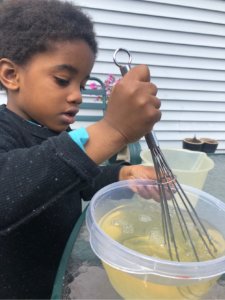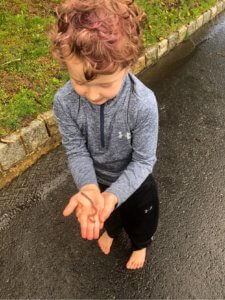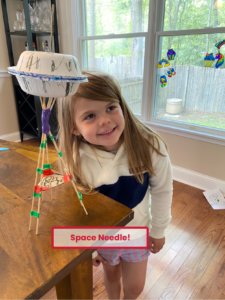What Should Distance Learning Look Like?
by Marnie Stetson, Far Brook Literacy Specialist
There is no simple recipe for distance learning. Students in a classroom thrive on connection–connection to their teachers, connection to their peers, and connection to the material they are learning. Children in a highly engaging classroom have time to read and think, to write and to discuss, and to create and get feedback on their work. Variety is crucial during distance learning. Prior to the pandemic children interacted multiple times throughout the day, with children and teachers at school, after school with soccer coaches and dance teachers, and in the evenings with family. Today’s world is different and school provides an important lifeline where children can feel connected to the world outside their home. Vibrant distance learning offers a variety of stimulating and engaging formats to spark a child’s creativity and curiosity.
At Far Brook teachers spent the first week of stay at home orders reimagining how a progressive Far Brook education could be reimagined to be taught and experienced from home. The resulting curriculum is intentionally structured to give children time to think, to explore, and to share their developing knowledge and insights with their peers and teachers. The diversity of experiences mirrors the kind of connection and individualized attention they would receive if we could be on campus. Students participate in live classes. They also gather in small groups or individually with a teacher to ask questions about a video lesson they watched or discuss a short story they are writing.
But their world is not limited to interactions with their classmates and teachers. Students also explore the world outside their classroom walls. Children are always curious about how the world works and what their role is in making it better, and in the face of a global pandemic, providing students with agency helps make learning meaningful. Spending a day “spreading sunshine,” by creating messages of hope and encouragement, empowered our students to take action. Our students also heard from a wide array of outside visitors who are making positive change. They heard from a surgeon, a design and technology expert, a songwriter, a conservationist, a Holocaust survivor, and a U.S. Congressman. Inspired by their visitors, students have created projects designed to share their vision. Just a few of the ways students demonstrated their learning include: fourth graders learned how to conduct an interview with a family member and then turned those stories into narrative; fifth graders practiced teaching others about early American history by creating a picture book, a graphic novel, or a video lesson; and sixth graders embarked on a virtual trip to Washington, D.C.
Distance learning, after all, is still learning, and although it is now being delivered in a new way, without the benefit of physical proximity, the emphasis on creativity, curiosity, and “learning by doing” still defines our learning community.
Want to take a sneak-peek into Far Brook’s distance learning classrooms? Please enter your email below to access recent articles on Far Brook’s distance learning program!
What Current Parents Have Said About Our Distance Learning Program









